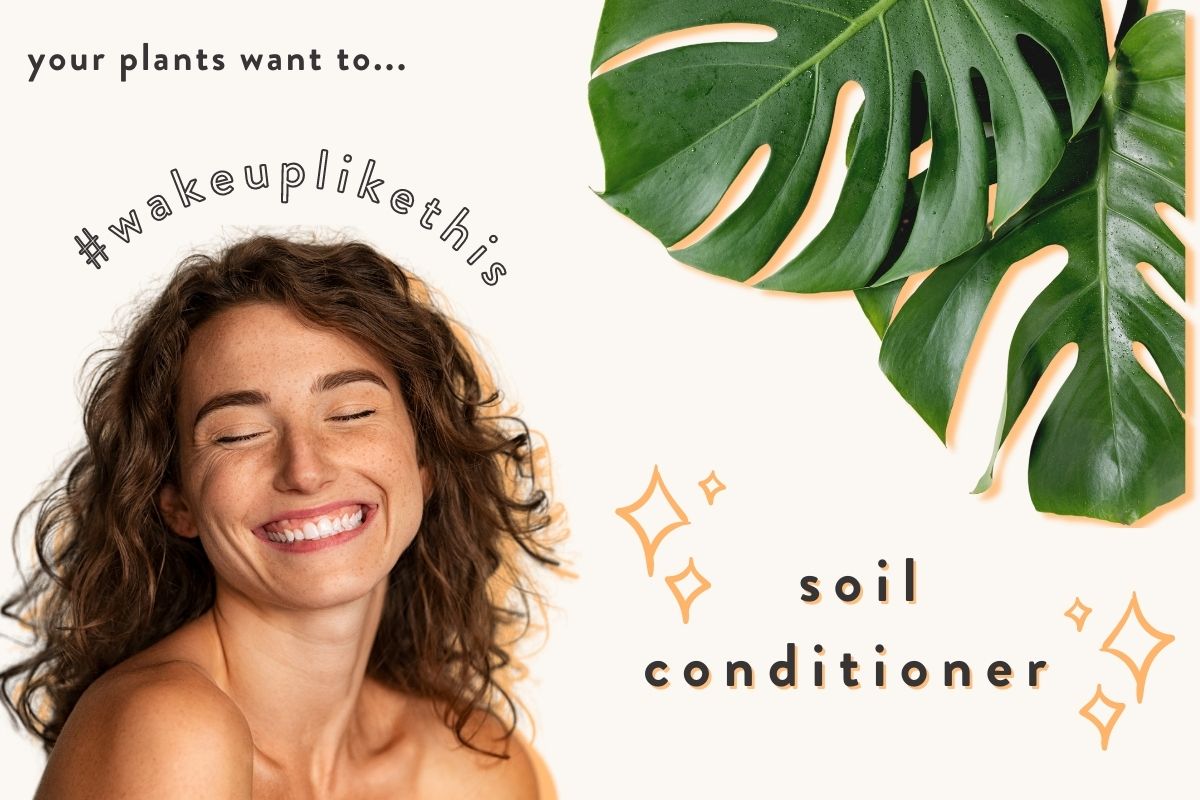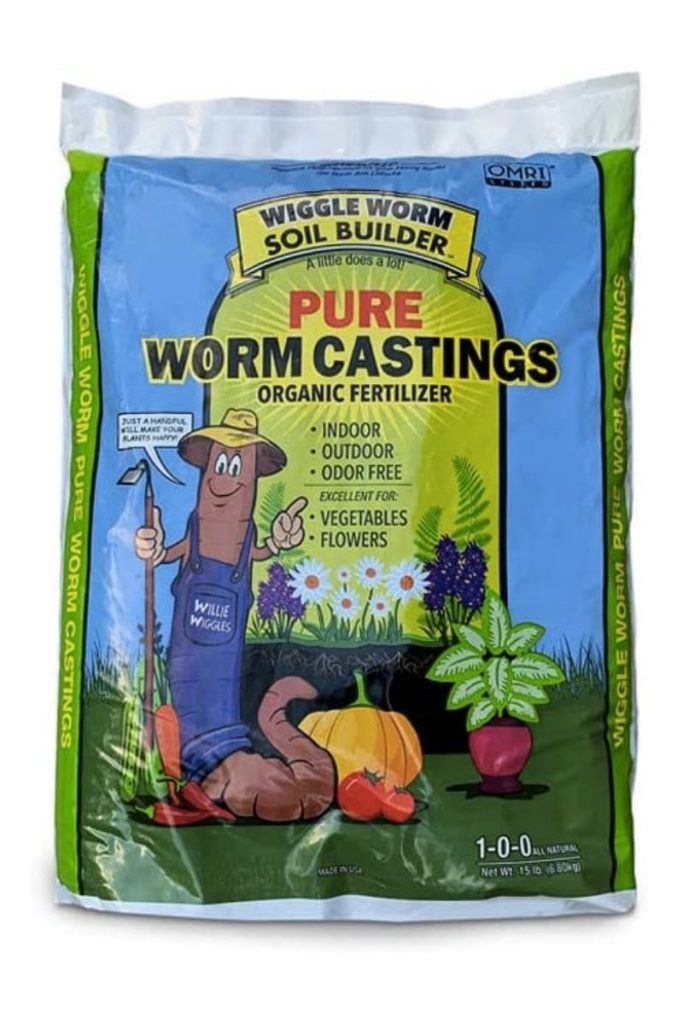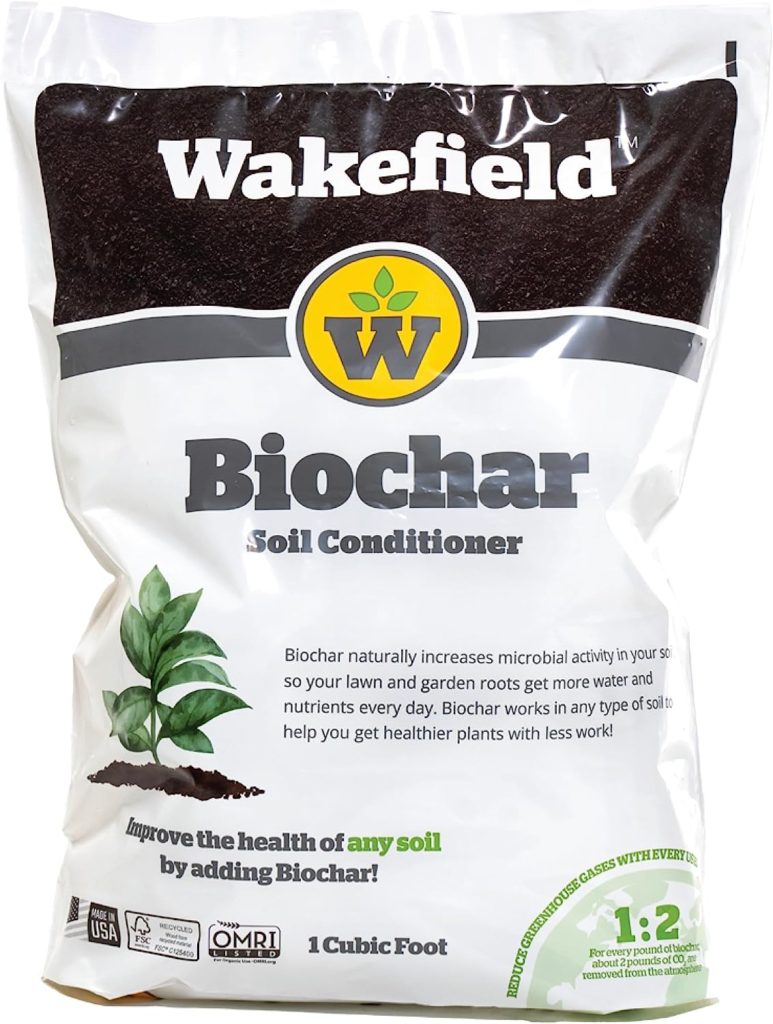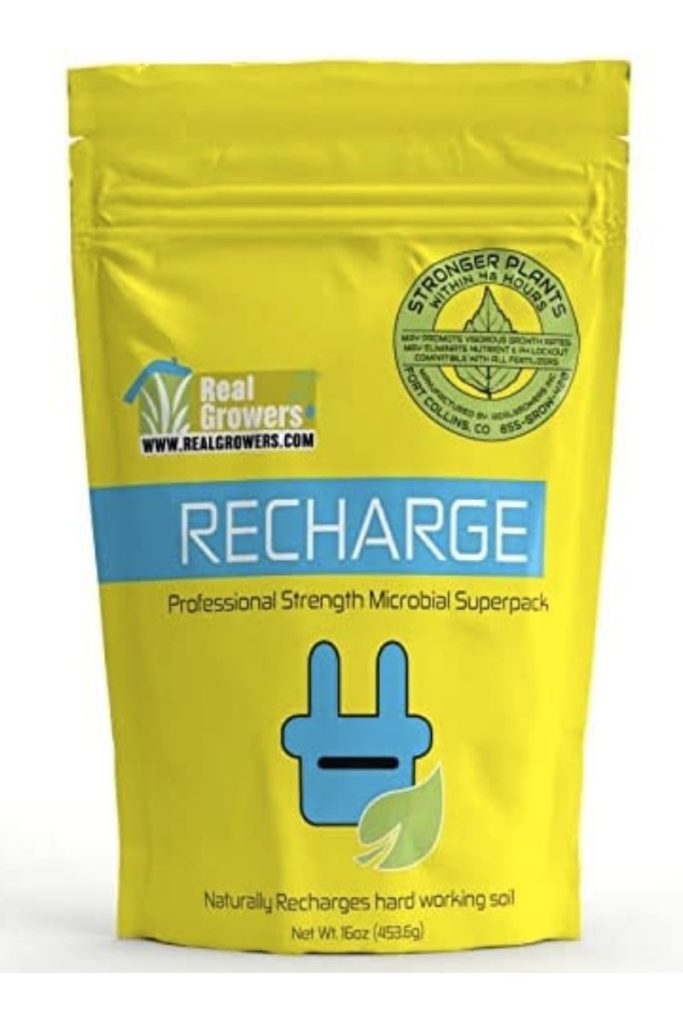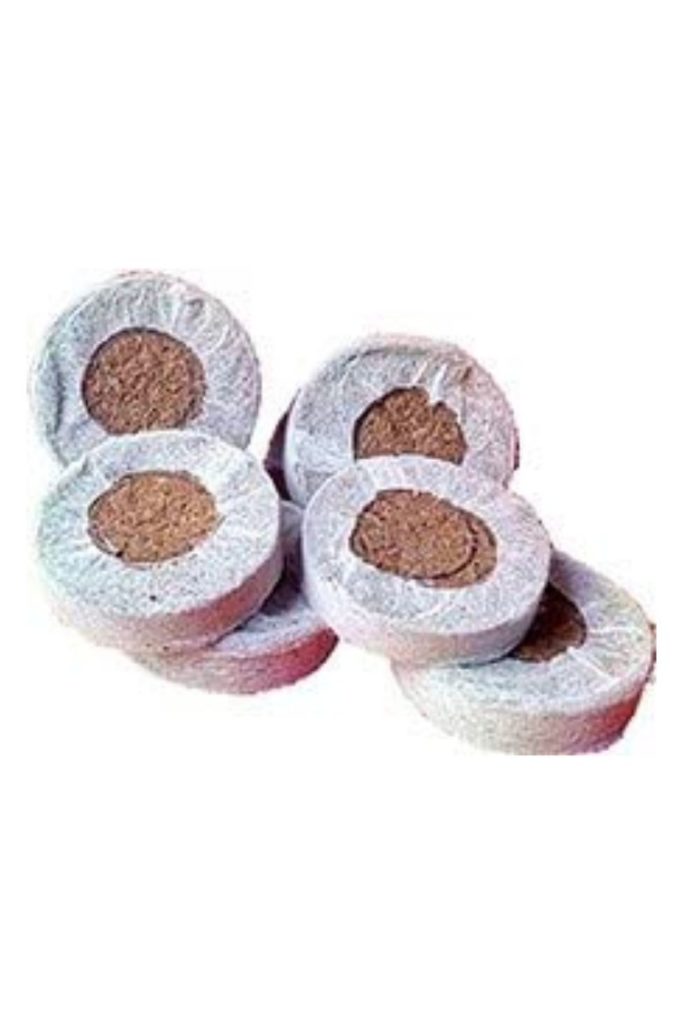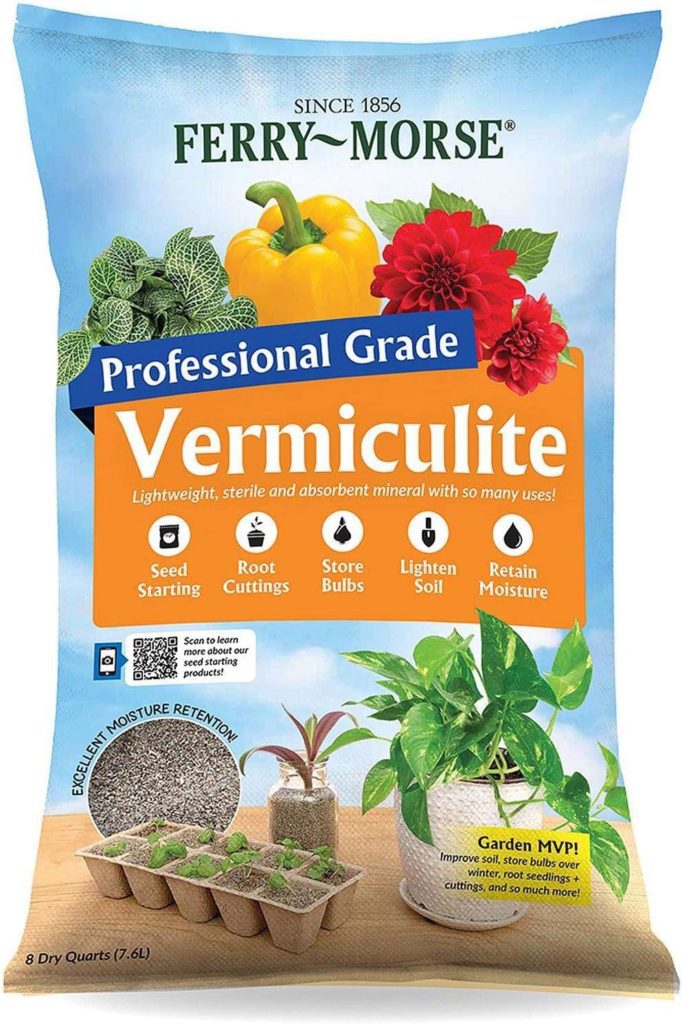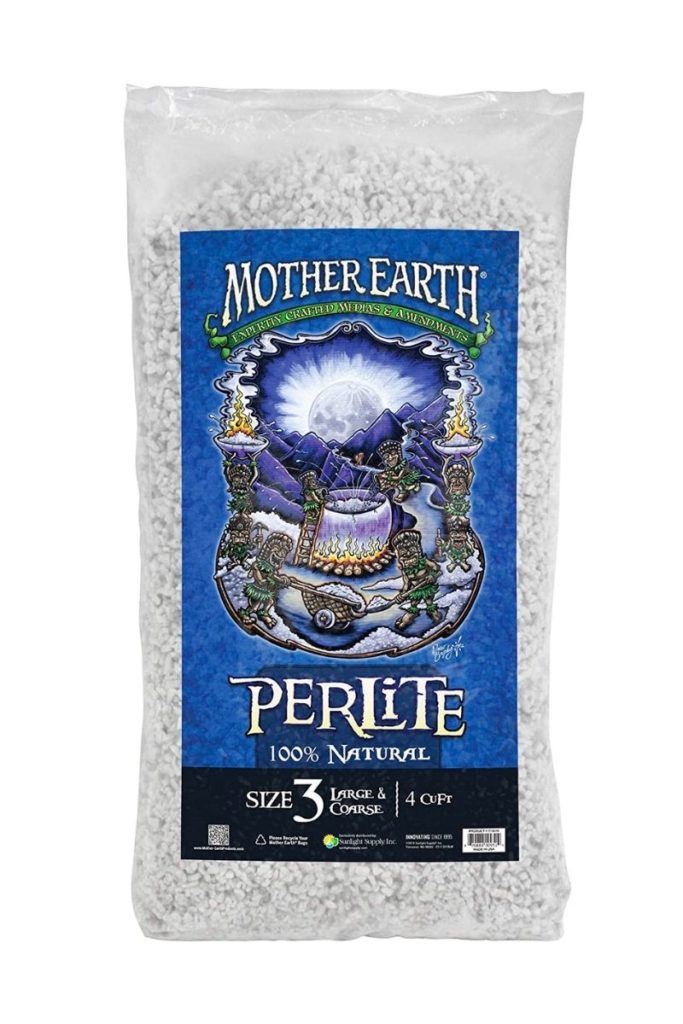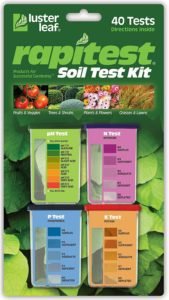Looking for that secret something to get your plant glowing like an Insta influencer who #wokeuplikethis? Enter: soil conditioner.
Like the bare-faced beauty trend, the secret to vibrant houseplants is all about giving nature center stage ✨ It’s about going back to basics and getting them right so nature can do the rest, no matter what type of soil your plant prefers. In this article, we’ll walk you through one great product that can help you replace your harsh synthetic pesticides and heavy fertilizers: Soil conditioner.
Your houseplants rely on potting soil for nutrients and support for their root structure. The pot is a closed system though, and it’s up to you to add amendments now and then that improve its nutritional capacity and keep your plants healthy.
what is soil conditioner?
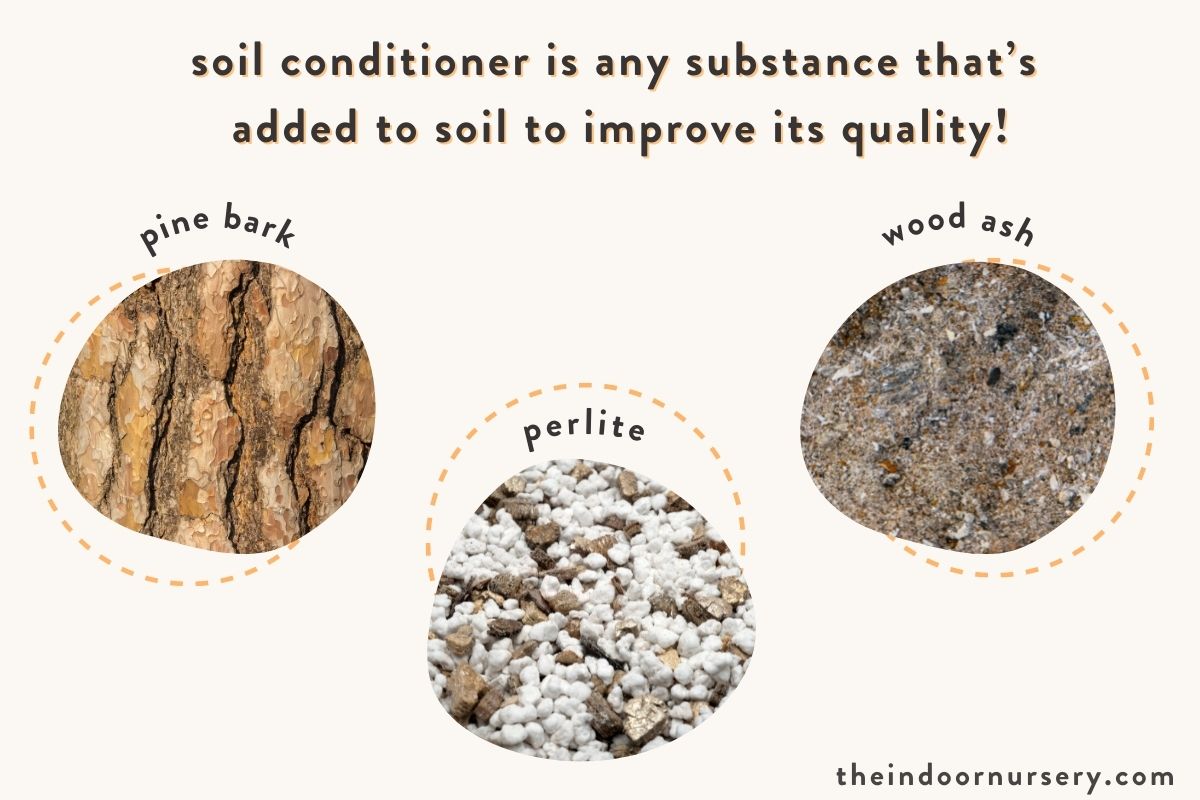
Soil conditioner is any substance that’s added to soil to improve its quality. Soil conditioners include organic amendments like pine bark, perlite and wood ash, and even leftover scoby alongside products designed specifically to improve soil health. Potting soil should provide the support, nutrients, moisture, and oxygen that your plant needs to thrive, but as any indoor gardener knows – this can be tricky!!
Based on your plant’s origins, its ideal soil conditions and nutritional needs will vary. Plants like philodendrons and succulents need different things from their soil, and what’s right for one won’t be right for the other. For the same reason, some plants need more fertilizer and attention than others. No matter what kind of plant you have, though, soil conditioner improves your potting soil’s ability to retain and deliver nutrients.
what is soil made of?
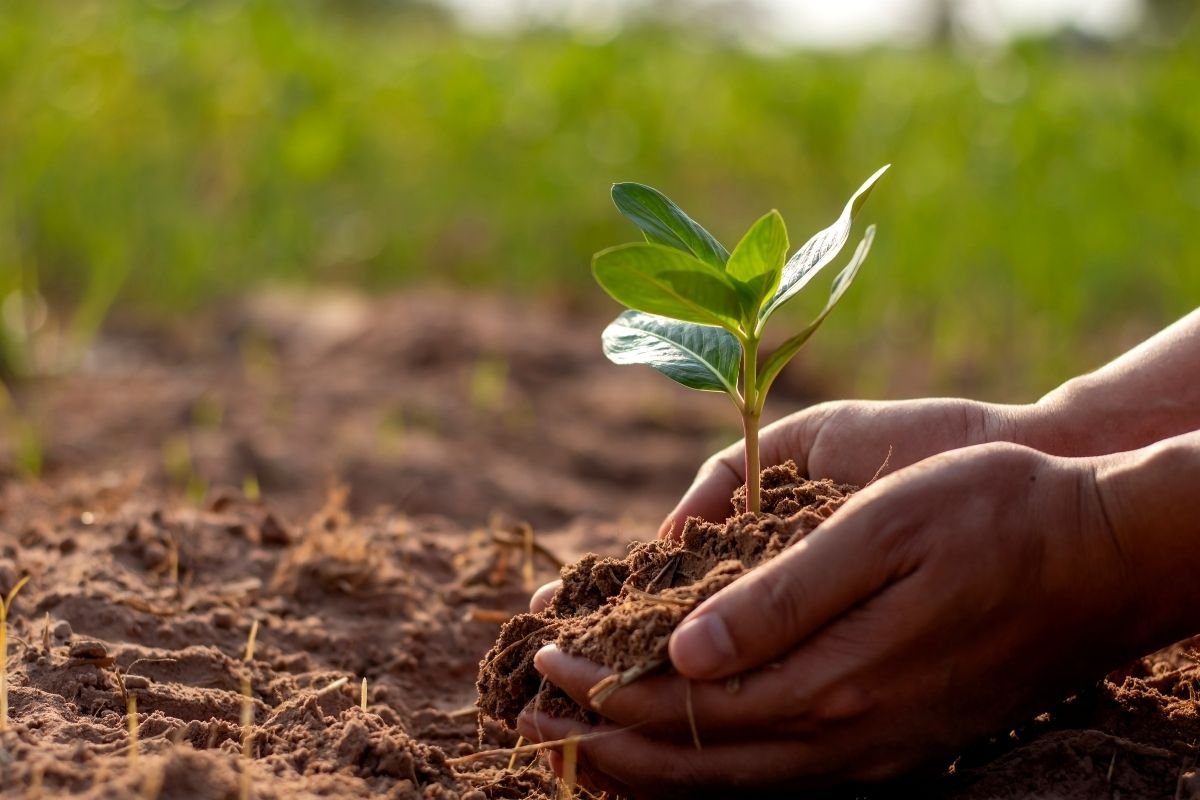
To understand how soil conditioner works, it’s essential to know a bit more about soil! Soil is a mixture of decomposing organic material and small pieces of stone. In nature, the organic material comes from decomposing plants and organic materials on the surface of topsoil, and the stone from eroding bedrock. Worms, bacteria, and other decomposers break down the organic material to release nutrients, which is leached by water and then absorbed by plants through their roots.
Plants can deplete soil of its nutrients anytime the decomposition cycle of organic material cannot keep up with the requirements of the growing plants. This happens frequently with container plants, as an indoor gardener knows, but it can also happen in nature. The contents and condition of the soil will determine whether it can support plant life; if it contains enough oxygen, nutrients, and the right amount of moisture, plants will thrive. If the soil is deficient in any of these areas, plants growing in it will lose their luster and eventually die altogether if conditions don’t improve.
types of organic soil conditioners for indoor plants
When we care for a plant’s soil, we care for the plants growing in it! Maintaining soil quality involves watering, adding fertilizer, monitoring the moisture content and pH level, as well as making sure there’s enough – but not too much – soil for your particular plant (plants like fiddle leaf fig are known to “eat” their soil and require a top up every once in a while). Knowing what kind of conditions your plant likes in nature is your best guide to maintaining healthy soil in its pot.
Even when using soilless growing media like coco coir or LECA, the factors that contribute to the profile of your growing medium are the same as when you grow in soil:
- Size of pot
- Amount of soil
- Types of amendments
Large pots hold lots of soil and lots of water, while smaller pots need to be watered more frequently. The amounts you use of each type of soil amendment will also affect your growing media’s overall quality. Too much or too little of an ingredient can completely change how the soil behaves.
moisture retention
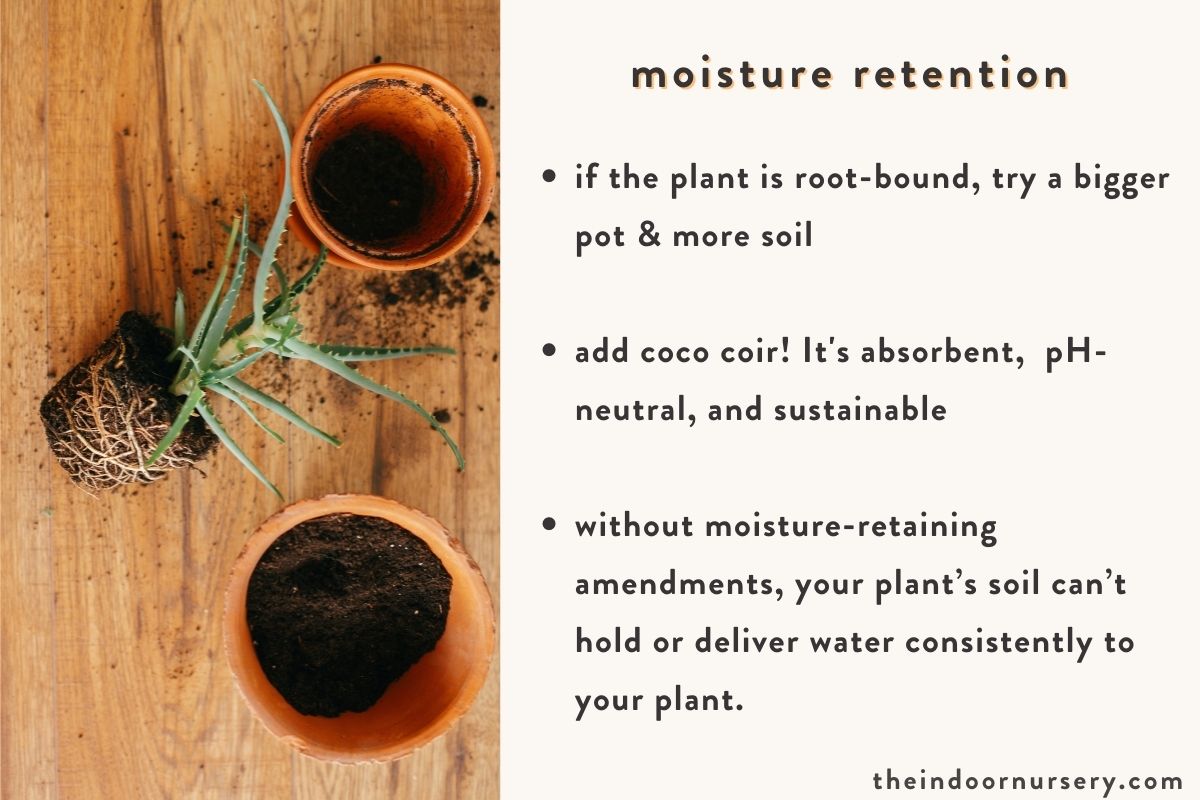
If you’re finding that water is draining quickly out of your plant’s pot, it might need to be amended with materials that will hold on to more of that moisture. It might also mean the plant is root bound and doesn’t have enough soil in its container to hold onto water. If your plant is root-bound, a bigger pot and a bit more soil might be all you need to solve the problem. Most plants like soil that retains at least some moisture, but that amount varies considerably by species.
Most potting soils are made with a base of coco coir or peat moss. Coco coir is a favorite for homemade mixes since it’s not only a soft, absorbent and pH-neutral material, but it’s also sustainable. Yep, it’s true! Most peat moss isn’t sustainably harvested. It’s also more acidic than coir, requiring balance with basic amendments or chemical pH balancer.
The bottom line here is that without moisture-retaining amendments, your plant’s soil can’t hold or deliver water consistently to your plant.
Drainage
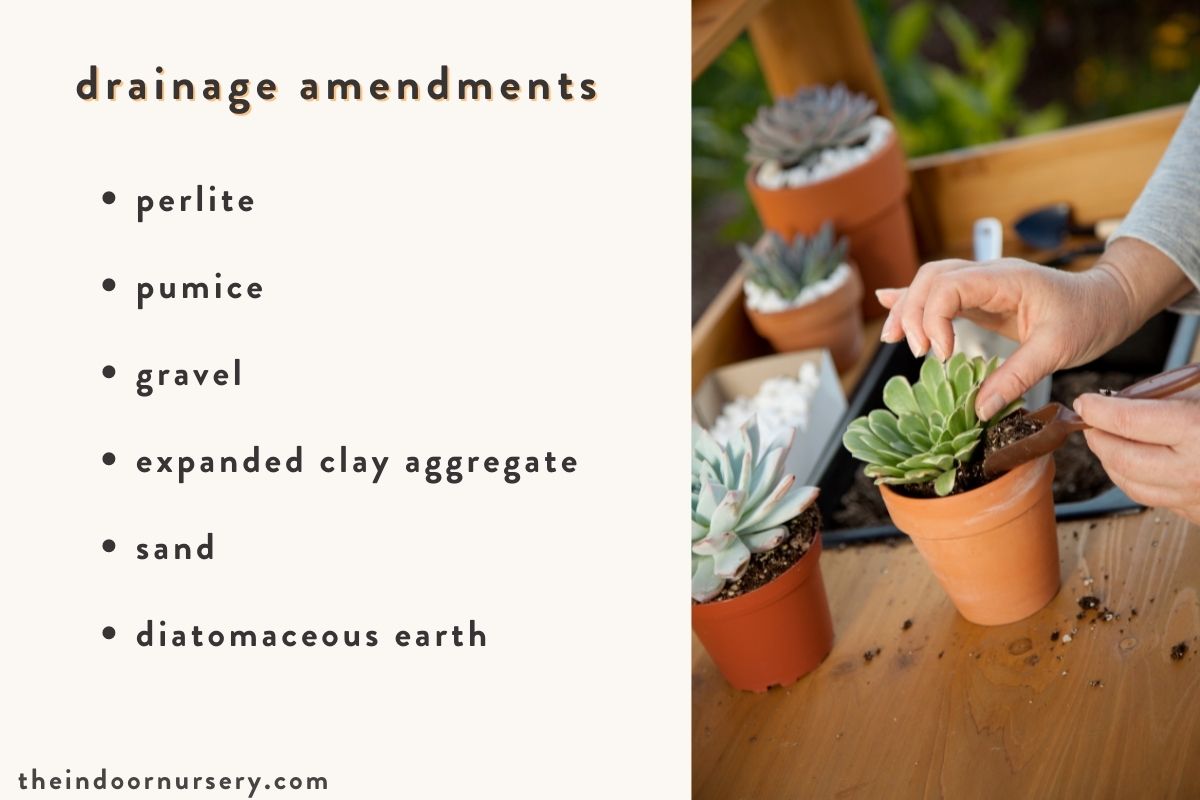
On the other side of the coin, plants also need soil that doesn’t hold onto too much water. Plants have widely varying moisture needs, so do some research on your particular plant before you decide on adding a ton of perlite to its current potting mix. Monstera’s delicate roots are like consistently moist soil with just enough drainage to prevent root rot, just like the rainforest floors where they grow in the wild. Succulents and cacti, on the other hand, need soil with a higher ratio of drainage elements to replicate their desert origins.
When it comes to choosing the right drainage amendment to add to your soil, you have many options. Here are a few popular amendments that improve soil structure and drainage:
These materials ‘aerate’ soil by creating space for water to filter through it. They also loosen compacted soil and break it up with air pockets. Some materials, like LECA and horticultural charcoal, both help drainage and moisture retention. The balance between moisture retention and drainage is an important one and is always changing. It shifts over time as soil compacts and the nutrient balance changes.
Soil compacts naturally over time and may eventually hold on to more water than the plant growing in it needs. Lighter materials, especially perlite, can rise to the surface of the soil after repeated waterings, contributing to the effects of compaction. To avoid this common problem, it’s a good idea to use different-sized materials in your soil, like pumice and bark, to prevent the materials from clumping together.
Fertilizer
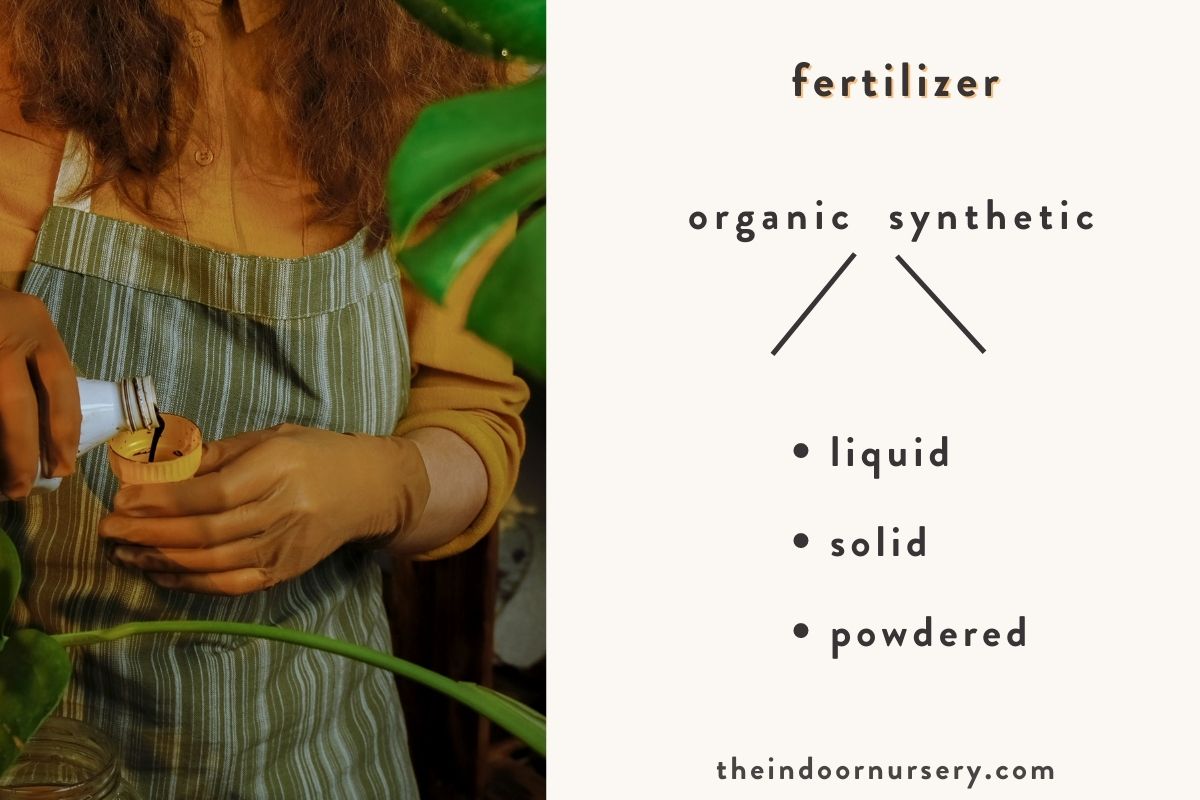
Fertilizer is an important type of soil conditioner, which replenishes soil nutrients when the levels run low. Fertilizer comes in so many forms these days, the choices are endless. Amongst the synthetic and organic options, you can choose liquid, solid, or powdered fertilizers depending on your plant’s specific needs.
You can typically use liquid fertilizers on houseplants a few times a year, or more frequently in diluted doses. Liquid fertilizer is particularly popular with houseplant owners because it contains nutrients that are available immediately and come in concentrated form for easy storage and application.
Solid fertilizers are available as synthetic granules and organic formulas. You can add organic soil amendments like compost and worm castings from your worm bin to build soil bulk and deliver a slow release of nutrients over several months. Solid forms of fertilizer stay in the soil until they break down completely, so it’s important to measure these carefully to avoid over-applying them.
pH balancer

Soil can become too acidic or alkaline for your plant’s liking, often due to salt build-up from nitrogen-heavy fertilizer over time or other factors from your plant care routine like using under-aged compost. When organic materials break down in compost, they create good acids that make nutrients plants need available in the soil, but they can also raise the acidity above a level that your plants tolerate. If this happens, you need to change your potting soil or adjust the pH level of your soil with a balancer. The best way to monitor your soil’s pH is to take a quick pH test before you plan to fertilize your plant.
Most plants like a slightly acidic to neutral environment, and too far one or the other way becomes inhospitable for your plant. When soil is too alkaline, certain nutrients like iron and copper become unavailable and other essential nutrients become toxic to your plants; similarly, overly acidic soils can lock some nutrients out of being absorbed by your plants due to changes in their chemical structure and cause others to become over-available.You can add inorganic soil conditioners for fast results, but organic material is a good choice to build soil bulk and structure while conditioning the pH level over the long-term. Try these organic soil conditioners for treating pH imbalances in your soil:
- acidic soil: lime, wood wash
- alkaline soil: sulfur, compost
Microbes
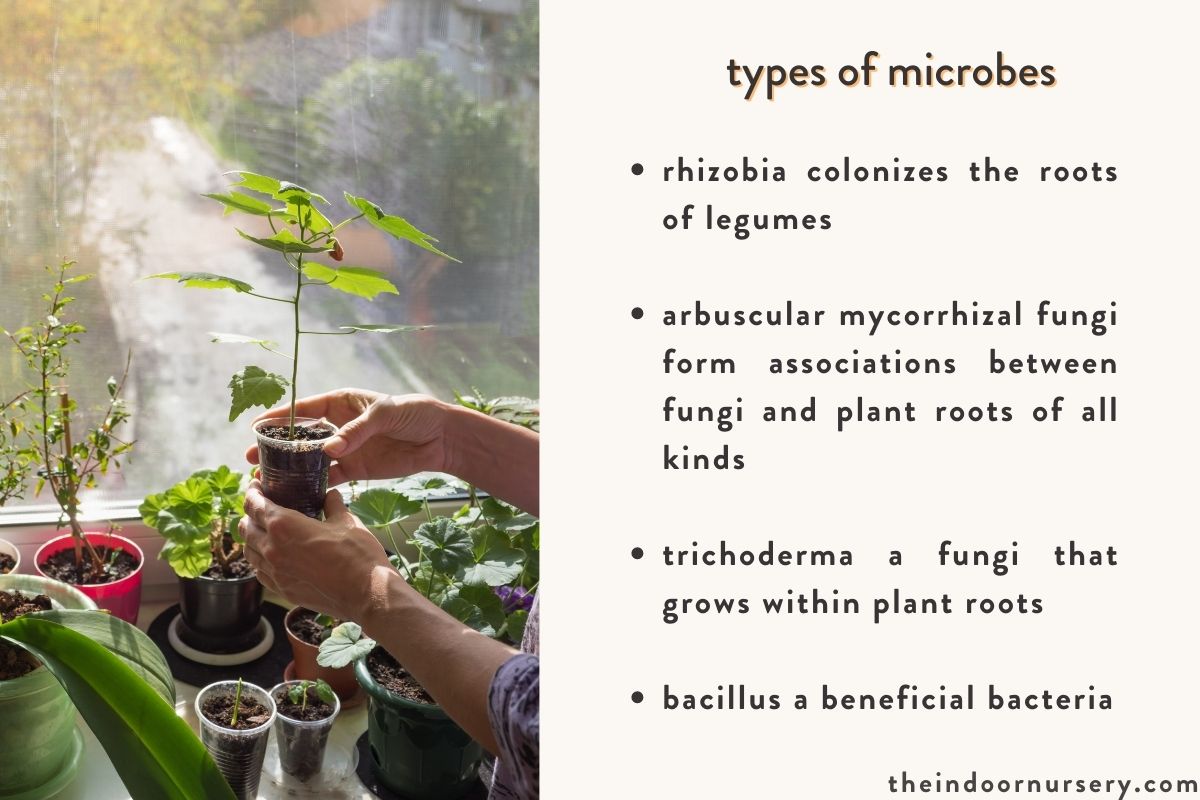
This might be the hottest thing in organic fertilizer these days, but there’s definitely nothing new about soil microbes. Microbes are live organisms that form symbiotic relationships in the root zone of plants, improving their uptake of water – and with it, nutrients. The thing is that the microbial life found in the layers of decomposing organic matter in outdoor soil is difficult to replicate without live organisms like earthworms and insects. Some organic fertilizers contain microorganisms and ingredients that keep them alive, but they typically aren’t anywhere near as effective in facilitating nutrient uptake as their naturally-occurring cousins. These are the four most common types of microbes found in soil that support plant life:
- rhizobia colonizes the roots of legumes
- arbuscular mycorrhizal fungi form associations between fungi and plant roots of all kinds
- trichoderma a fungi that grows within plant roots
- bacillus a beneficial bacteria
Look for potting soils or plant food that contains live microbes to see the difference that active conditioners make for your own houseplants. Some plant foods like this one from Epsoma are activated by moisture and support active root growth for starts, transplants, and any plant in need of a general boost:
monitoring the soil
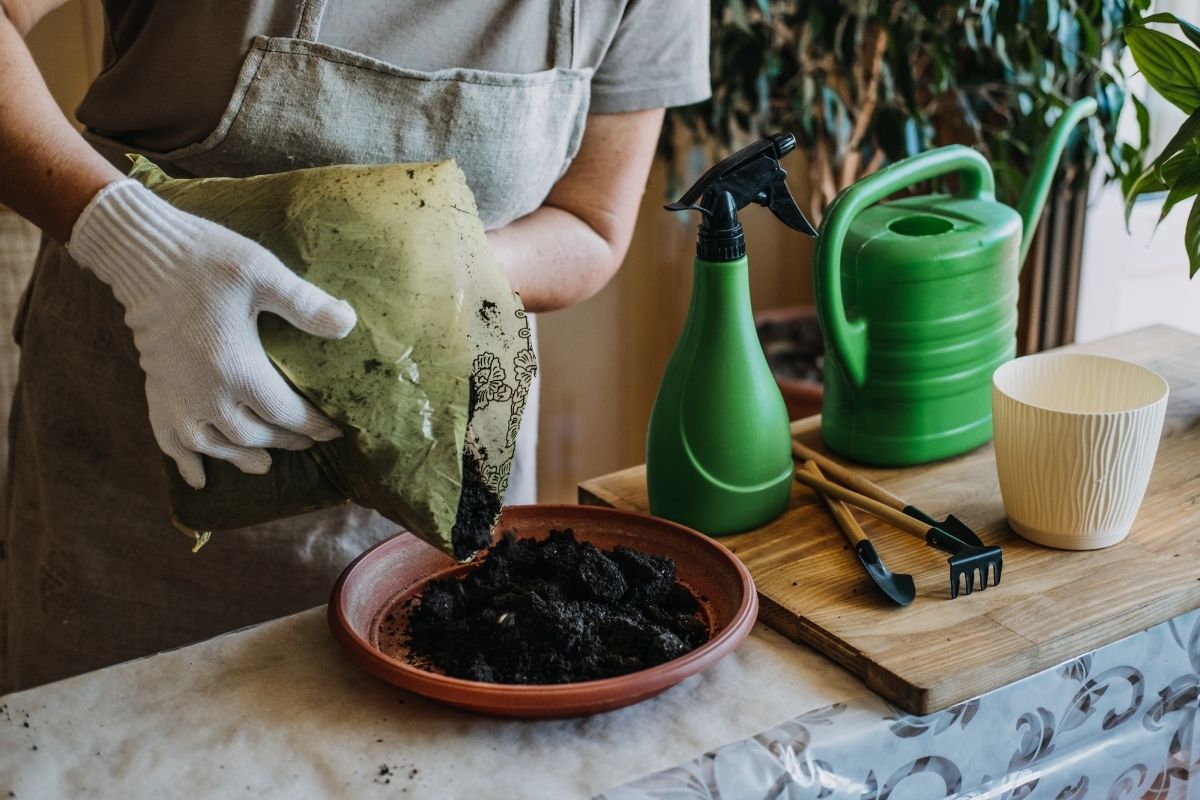
Keeping your potting soil in tip-top condition isn’t a one-and-done endeavor. It takes consistent work and close attention! While this may be obvious in nature, the quality of potting soil changes throughout the year in response to humidity, temperature, plant health, watering routine, and other subtle changes to your plant care routine. Nutrient depletion and pH swings occur over weeks and months. It’s always a good idea to check out your plant’s soil before fertilizing to make sure not to burn your plant. On top of these checks, you can monitor your soil health with nutrient and pH tests.
Over and above any monitoring with fancy tools, you should always keep an eye on the condition of the plant itself. Your plant will show you if there’s a problem through its foliage. If you’re seeing yellowing, browning, or wilting leaves, check your plant’s soil conditions against your recent watering and fertilizing applications, and make changes promptly to respond to these warning signs that something’s wrong.
more about soil
- How to Use Leca for Plants: Step-by-Step Guide with Pictures
- Best Soil For Snake Plants That Will Keep Them Happy
- The Best pH Meter For Soil
- The Best Soil For Indoor Plants (Every Kind Of Plant)
- The Best LECA Balls (Expanded Clay Pebbles) For Your Plants
- 8 Best Soil Moisture Meter Options For Indoor Plants
- Best Soil For Monstera Plants (DIY Recipe + Store-Bought Options)
- How to Make Potting Soil for Indoor Plants, Plus My Secret Ingredient
- Is that mold on plant soil? Here’s what you need to know.
- How to use a moss pole for plants: An expert explains

